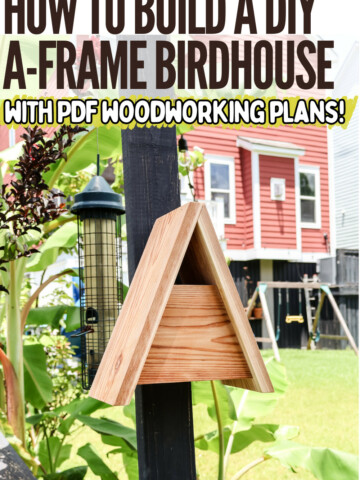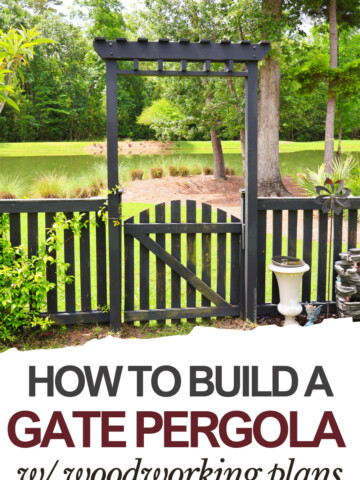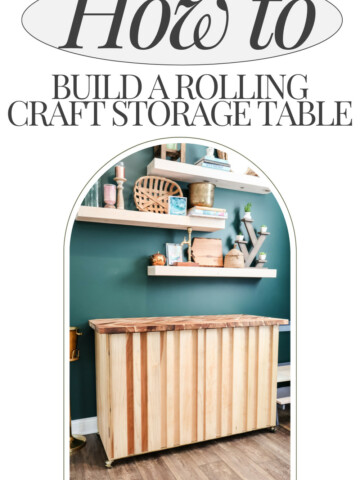A common misconception is that the name of lumber at the store is the size the wood actually is. This is no longer true, so we're here to talk all about the difference between common vs actual lumber sizes and break it all down for your next woodworking project!
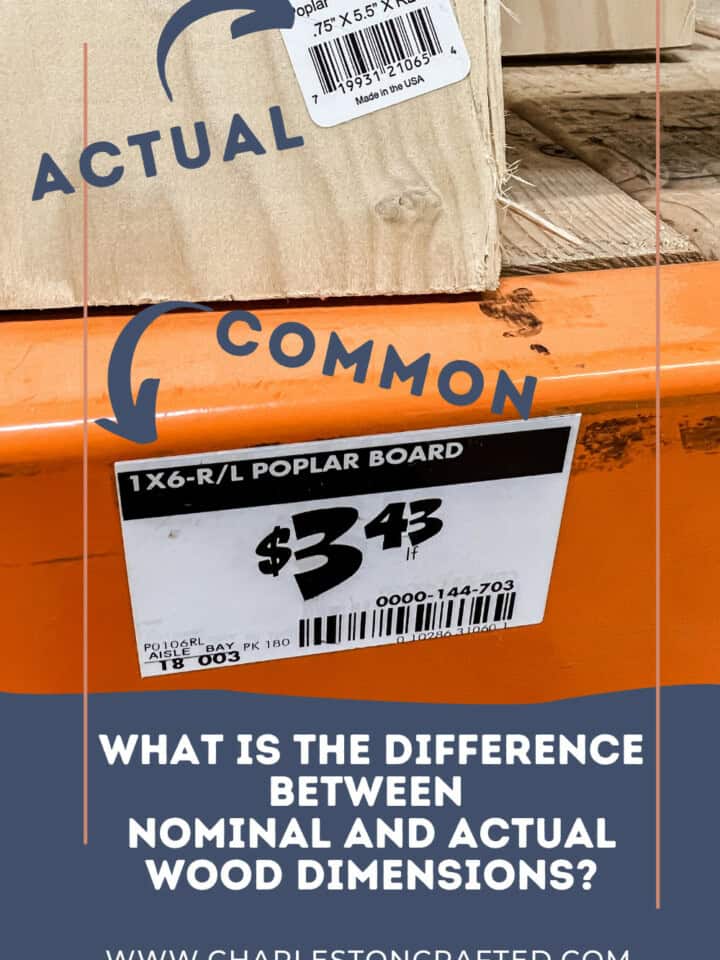
Have you ever been to the home improvement store to buy wood and noticed that wood is called one thing, but the actual dimensions of it are something else?
If you're reading this post, I assume the answer to that is yes.
One crazy thing that we didn't know when we started doing DIY woodworking projects is that boards are not the dimensions they say they are.
Standard lumber sizes are one of the most confusing things in the world of DIY projects and woodworking, especially to people who don't do it regularly and aren't familiar.
This is what is known as actual versus common (or nominal) board measurements. Lumber is labeled by its common measurement, such as a 1"x8" or a 2"x4" because historically, these were the dimensions. Over time, manufacturers began to mill the wood differently to a smaller processed size.
When following a woodworking plan or blog post, when someone refers to a 1"x4", they mean a board that is actually ¾"x3 ½".
Common (or nominal) lumber sizes are not the same size as the actual wood board itself, which can lead to problems with math and woodworking if you aren't aware. This post will break down all the differences between nominal and actual lumber dimensions and everything else you need to know.
Make sure you read our full post on how to buy wood for woodworking projects!
Nominal vs actual lumber dimensions
Common (or nominal) lumber is typically what you would see being called a 2x4 or a 1x6 or something like that. Historically, lumber was called what the thickness and width of a board were.
However, over time, actual lumber sizes have shrunk, but the name of the board remained the same for simplicity sake.
Builders and lumber mills realized that you could get the same result out of a board that was a little thinner than the old board, allowing them to create more dimensional lumber with the same amount of cut down forest.
This has resulted in the difference between common lumber sizes and actual lumber sizes.
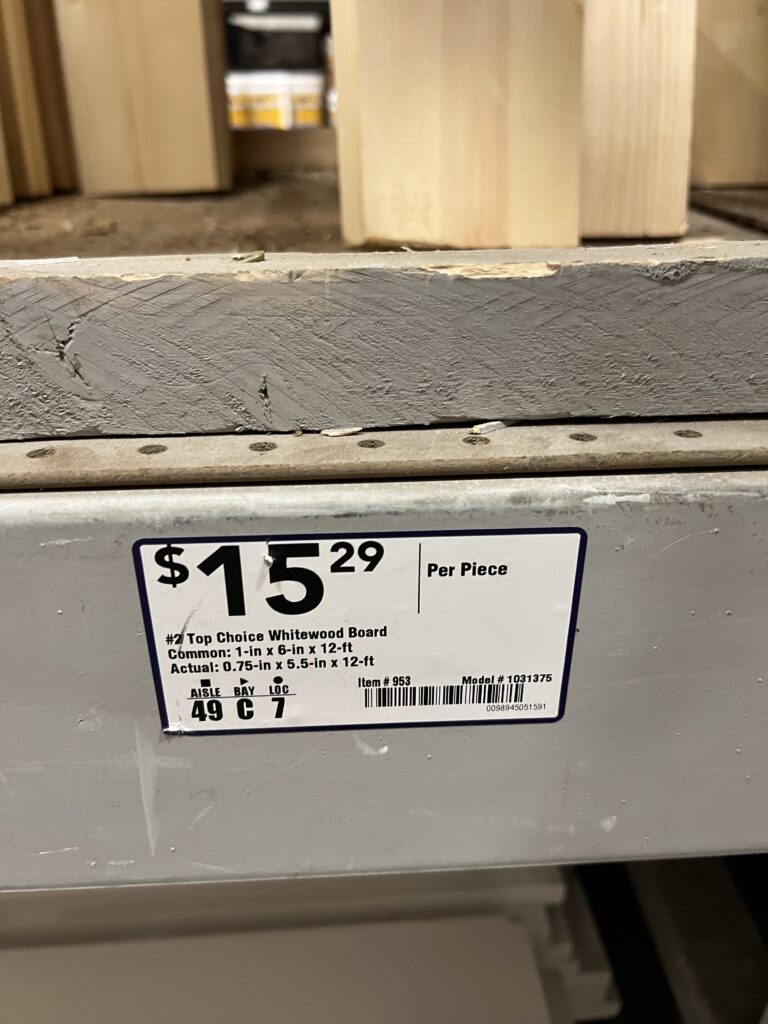
What is the difference between nominal and actual lumber?
The difference between nominal and actual lumber is the thickness and width of a lumber board.
Typically, the actual thickness of a wood board is 75% of the nominal thickness and the actual width of a wood board is around 85-95% of the width of the board.
What that means is that a board might be called a 1x4, but it's actually ¾"x3 ½". That's ¾" thick by 3 ½" wide, which is 75% of the nominal thickness and about 87% of the nominal width.
The actual difference is that lumber mills over the years decided that they could charge the same amount for a slightly smaller board and no one would complain, but they would make more money from each individual tree they milled.
What is the actual size of lumber?
The actual size of lumber is what is stated on the price tag on the board. For instance, Home Depot lumber sizes are listed on the price tag as their common name, but underneath with show the actual dimensions. Lowes lumber sizes are depicted the same way.
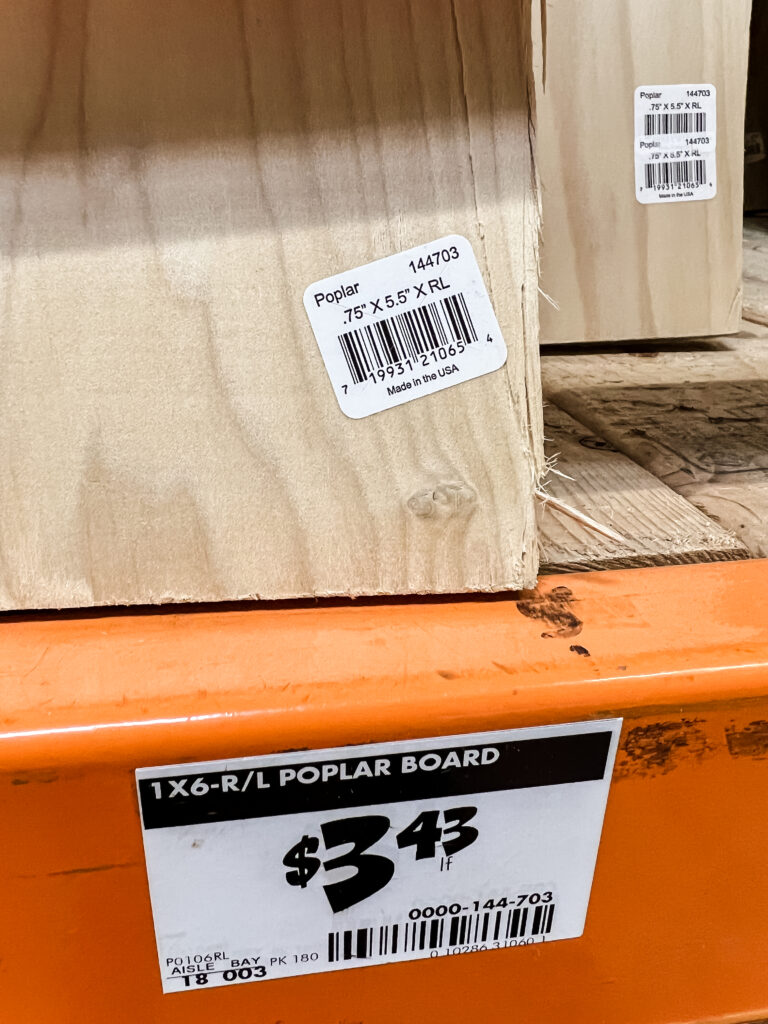
The actual sizes of lumber are the standard sizes in all big box stores nowadays and the products shown on store shelves are going to have the actual size to avoid confusion.
However, the actual size of lumber does not always correlate with the on the different sizes of the boards. As state above, the percent difference between the actual width of a board compared to the nominal width can be different.
For example, a 1x4 is 3 ½" wide, which is about 87% of the nominal size. But a 1x6 is 5 ½" wide, which is almost 92% of the nominal size.
Since there is no true consistency, we'll break it down even further.
Actual dimensions of lumber
Here is a breakdown of some of the most common lumber you can find at a home improvement store and the common (nominal) dimension versus its actual dimensions. For a printable version, scroll down to get our downloadable PDF.
| Common/Nominal Dimension | Actual Lumber Dimension |
| 1 x 2 | ¾" x 1 ½" |
| 1 x 3 | ¾" x 2 ½" |
| 1 x 4 | ¾" x 3 ½" |
| 1 x 6 | ¾" x 5 ½" |
| 1 x 8 | ¾" x 7 ¼" |
| 1 x 10 | ¾" x 9 ¼" |
| 1 x 12 | ¾" x 11 ¼" |
| 2 x 2 | 1 ½" x 1 ½" |
| 2 x 3 | 1 ½" x 2 ½" |
| 2 x 4 | 1 ½" x 3 ½" |
| 2 x 6 | 1 ½" x 5 ½" |
| 2 x 8 | 1 ½" x 7 ¼" |
| 2 x 10 | 1 ½" x 9 ¼" |
| 2 x 12 | 1 ½" x 11 ¼" |
| 4 x 4 | 3 ½" x 3 ½" |
| 4 x 6 | 3 ½" x 5 ½" |
Lumber size chart PDF
It's very difficult to know off the top of your head the exact actual size of lumber compared to what the name is, so we broke it down for you in this simple chart!
This free PDF board sizes chart breaks down the difference between nominal and actual lumber dimensions and can be printed off and taped up in your workshop.
You're going to want to keep this wood size chart handy for woodworking projects or planning so that you make sure your math is right when you make your cuts!
Can you buy actual size lumber?
Yes, you can buy actual size lumber that is the same dimensions as the stated name, but you will have to get that from a lumber yard or saw mill. Home improvement stores are going to use the common lumber name and sell them with smaller sizes.
Is an 8 foot 2x4 actually 8 feet long?
While lumber is usually not as thick and wide as the name implies, the length is usually accurate. For instance, if the rack says 2"x4"x8', the board is only going to be 1 ½" thick and 3 ½" wide, but it will be actually 8 feet long.
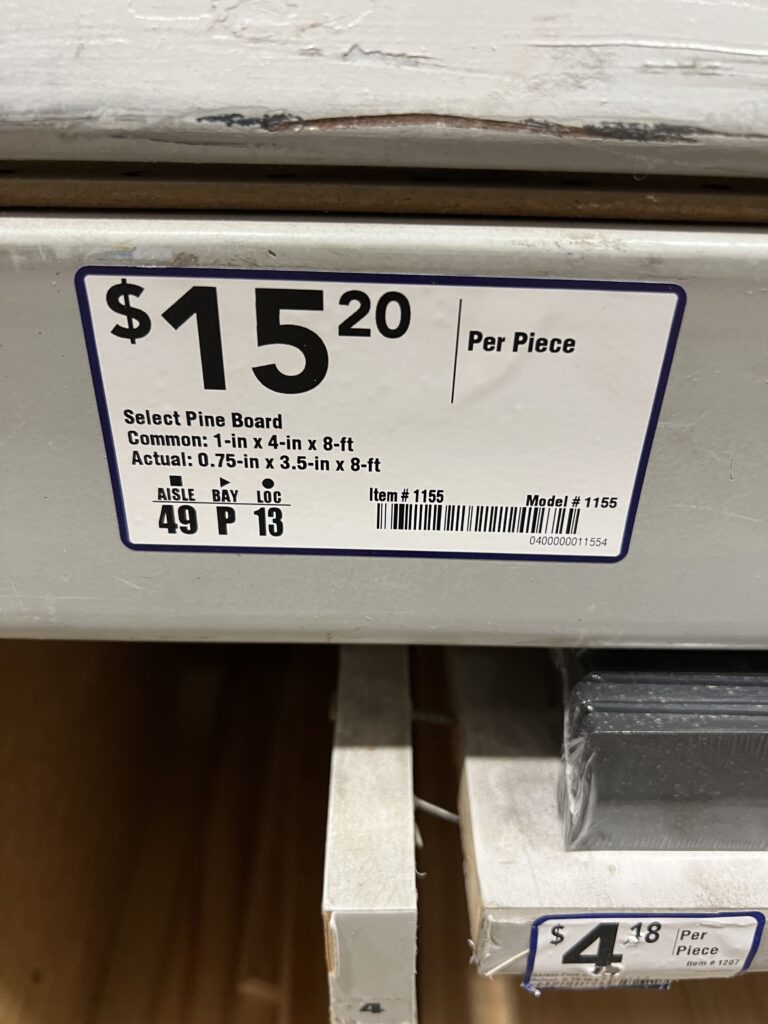
In many cases, boards are actually anywhere from ¼" to ½" longer than the state length.
Is plywood actually the size stated?
Unlike dimensional lumber, plywood is actually usually the size stated on the label. This means that a 4'x8'x¾" board is actually 4 feet wide, 8 feet long and ¾" thick. The biggest variable you'll see in plywood is that the thickness might not be 100% accurate, because it is made by filling wood bits and veneer, but it will be pretty close.
When was a 2x4 actually 2"x4"?
Wood dimensions changed around World War II, when supplies were short due to the war effort. Lumber mills started shaving off a little bit of each board so they could produce more from each tree they harvest.
After the war, these dimensions stuck around because they realized that it didn't make a true difference in woodworking, but saved the saw mills money.
If you do renovation work on a home built in the early 1900s or earlier, you'll find that the wood in the home is thicker, wider, and has a lot more rings in the grain than wood today.
Basic woodworking information for every project
Here are some of our most popular woodworking articles!
Shopping for wood:
Woodworking project ideas
- 100+ of the best woodworking project ideas!
- 62 easy beginning woodworking projects
- Woodworking project ideas to make and sell
See all our printable PDF woodworking plans!
Our favorite tools + supplies
- See all our favorite tool reviews
- How to use a Kreg jig
- The ultimate wood stain guide
- The best wood fillers for your project
Remember to also always use safety equipment while woodworking and using tools. Make sure you have proper eye protection, ear protection and a good mask to keep yourself safe.
Looking for something?
We've been doing this since 2012 so we have a LOT of blog posts!
Search stuff like: Ceiling Projects | DIY Plant Stands | Thrift Flips


Hey there, I'm Sean, the woodworking enthusiast and builder behind CharlestonCrafted.com! Since 2012, I've been sharing the magic of turning raw materials into beautiful creations. I love teaching others the art and satisfaction of woodworking and DIY. I try to inspire fellow crafters to make something extraordinary out of nothing at all.


